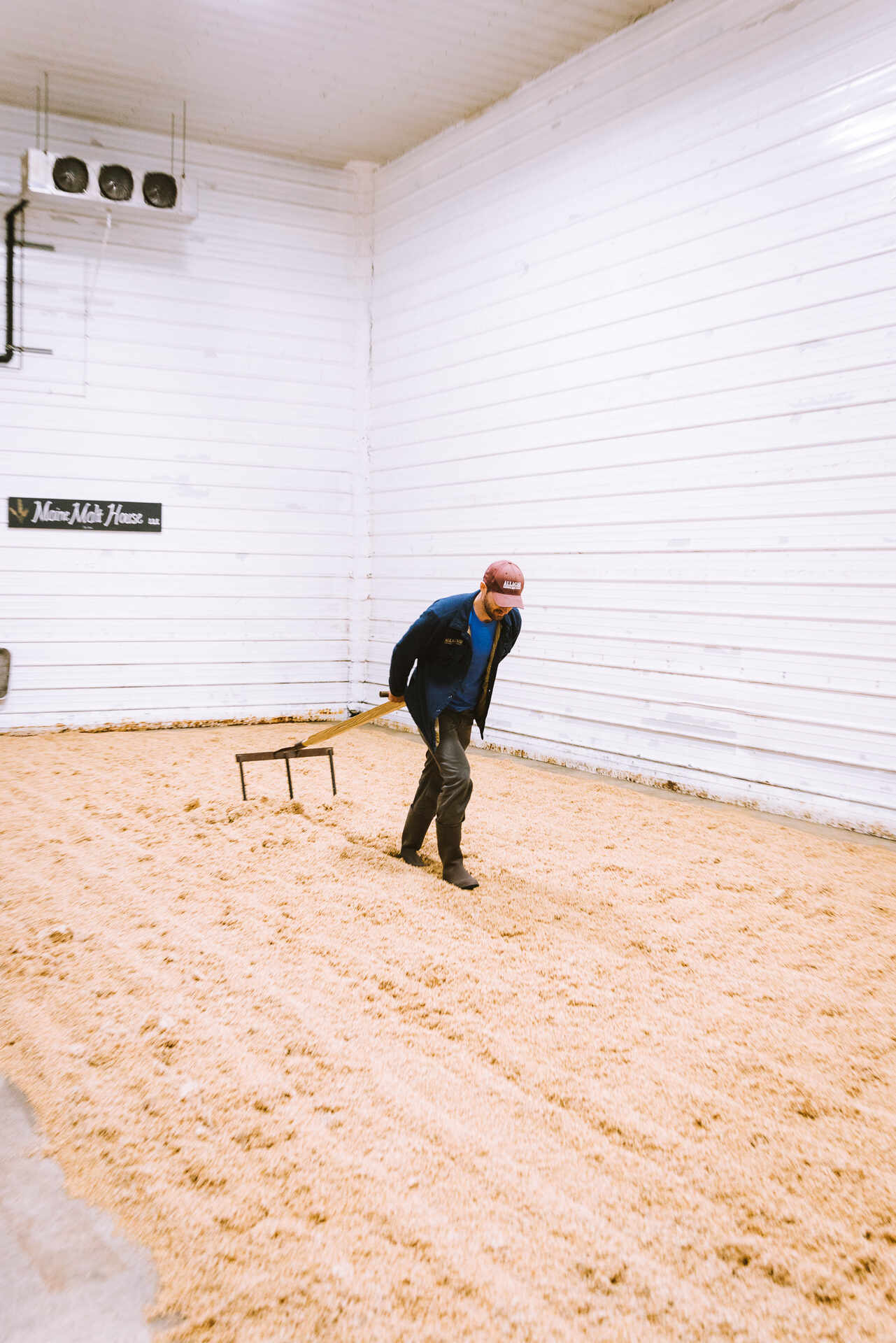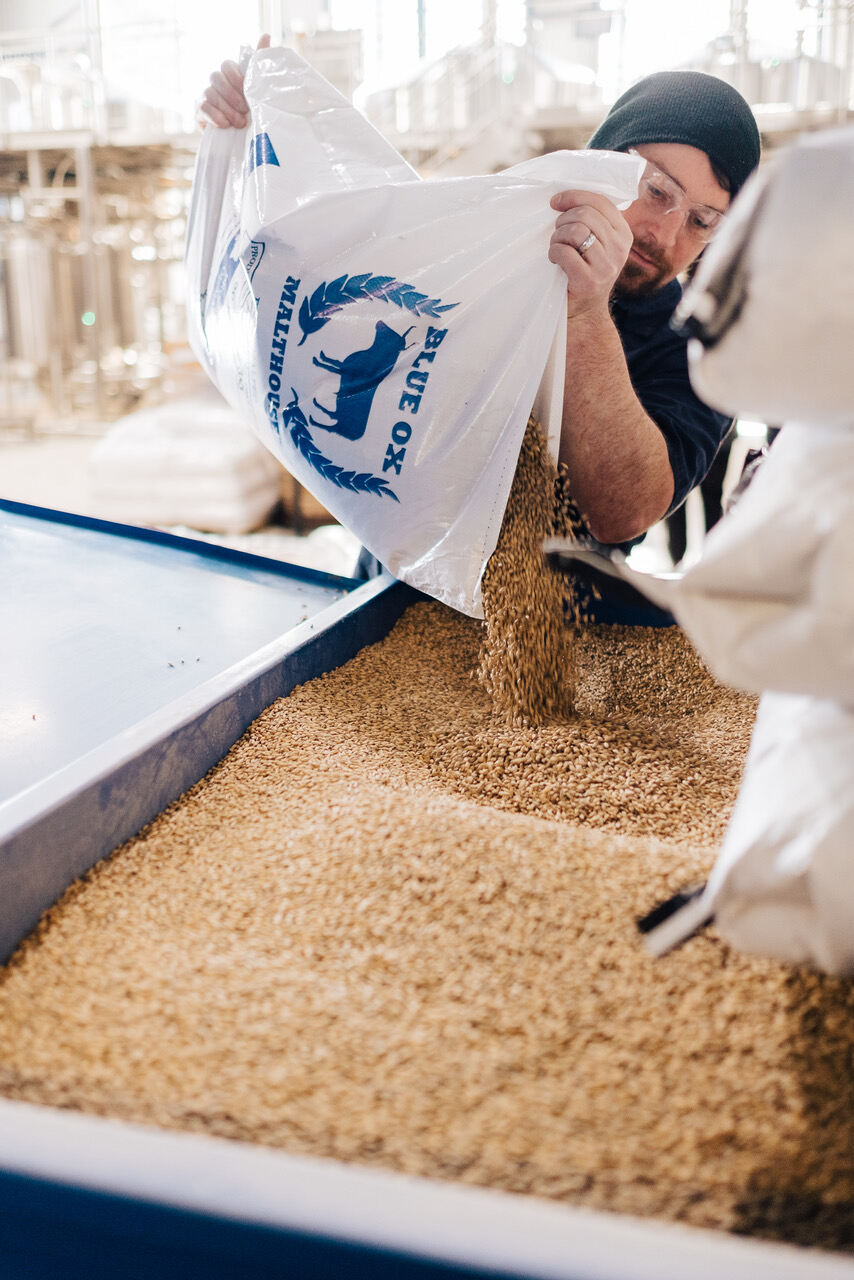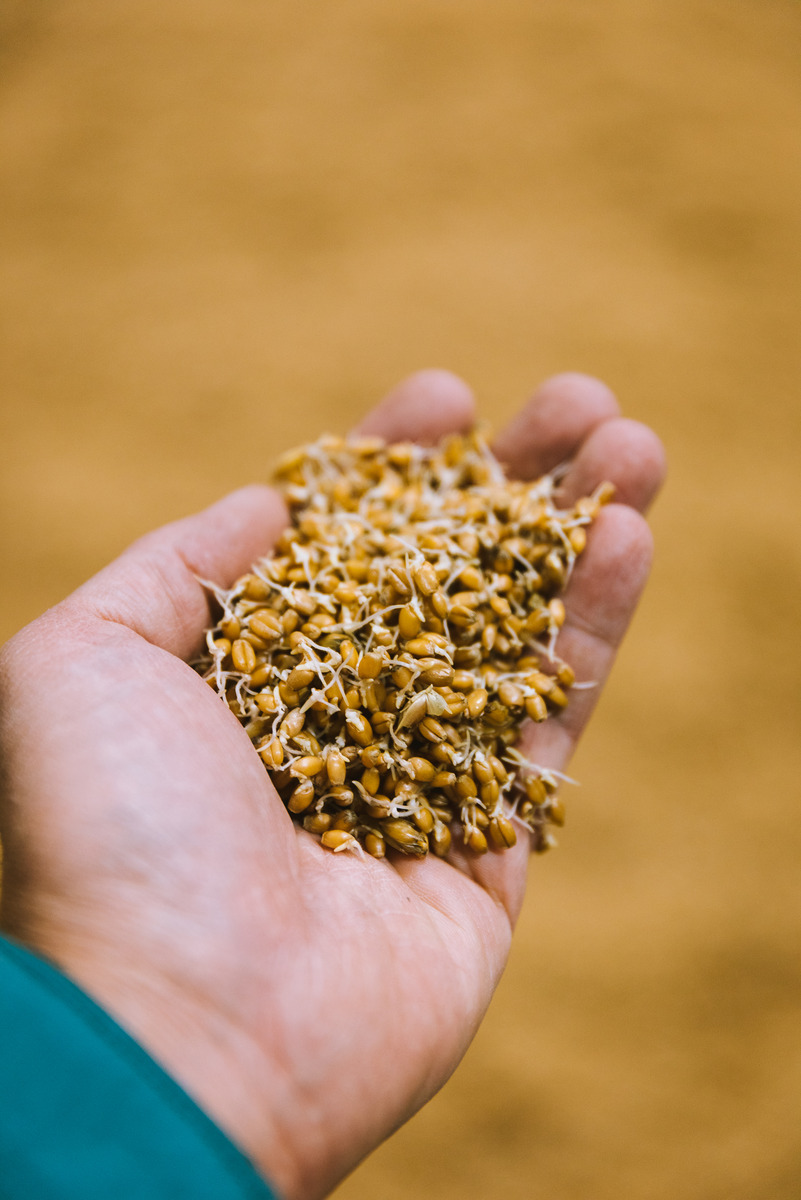Unless you’ve homebrewed or have read a lot about the technical side of brewing, we’d suspect you might have questions about what exactly “malt” is. Or why brewers tend to brew with malted barley? Or what malting even is, for that matter? Fear not! The goal of this blog is to get you familiar with malt, one of the fundamental ingredients in beer.
What is Malt?
Malt is grain that has been specially prepared for brewing. In its most basic explanation, brewing is the process of using water to extract sugar (along with other compounds) from grain. Why sugar? It’s what feeds the yeast that we ferment the beer with. And that fermentation is what creates carbonation, alcohol, and additional flavors. In any fermented alcoholic beverage, like wine, mead, or cider, you need sugar to feed the yeast. In wine, you get sugar from grapes. In mead, it comes from honey. In cider, apples. In beer, sugar comes from grain.

The process of floor malting involves a lot of physical work.
What is Malting?
More specifically, malt is really any type of grain that has gone through the malting process. Most often, brewers use barley or wheat—but you can brew with plenty of other grains like spelt, rye, oats, and more. Malting involves multiple steps—steeping, germinating, kilning and sometimes extended kilning/roasting—with the overarching purpose of making it easier for the brewer to extract nutrients from inside the grain (as well as adding flavor to the grain/beer through roasting). Malting has plenty of other effects on the brewing process, but this is one the the keys.
One important aspect of the malting process is the level of roast achieved during kilning/roasting. Typical base malt is usually gently kilned for a pale color. However, there are several other categories of malts: crystal malt, caramel malt, chocolate/roasted malts and more. Typically added in smaller amounts than a base malt, these “specialty” malts can add varying degrees of color, flavor, aroma, and texture to the beer. For example, chocolate malts—which have been substantially roasted—give the beer a dark hue, a roasty aroma, and flavor notes reminiscent of cocoa or coffee. Some beers even contain unmalted grain, like our Allagash White, where unmalted wheat adds some nice flavor and aroma.

Malted barley, ready for brewing, about to be augered into the Allagash brewing system.
Germination Station
To go a step deeper, malting is mainly about enzymes. During the germination phase of malting, the grain seed basically thinks it’s getting ready to feed a plant, so it changes its chemical composition. The maltster—the person who is controlling the malting process—then halts the grain seed at a specific point during the germination process by heating it up and drying it out. While this gets way technical, way quickly, one of the most important aspects of malted barley in particular is that it contains enzymes that—at certain temperature/moisture/pH levels during brewing—initiate the process of converting starch to sugar. In essence, the malted barley is helping the brewer get not only the most nutrients/sugar out of the barley itself, but every other grain the brewer is using to make that particular beer.
The Result
Wort. Once the brewer has finished the brewing process, they are left with wort. If you’ve ever tasted wort, you know it’s pretty much just sugary, grain-flavored water. It’s this wort that we’ll then add yeast to, which will be very happy about all that grain-based sugar and nutrients it has to eat. Once that yeast finishes its work, we’re left with delicious beer.







